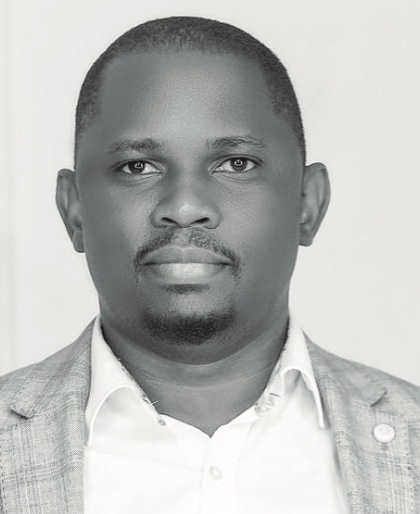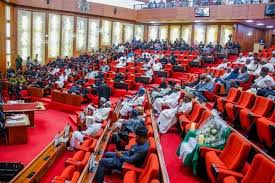
Screenshot
 While our economy grows and our cities expand, our public transport system remains one of the weakest in East Africa.
While our economy grows and our cities expand, our public transport system remains one of the weakest in East Africa.
This failure is not coincidental; it stems directly from years of systematic neglect, poor planning, and a relinquishment of responsibility by the government. The result is daily hardship for Ugandans, urban congestion that chokes productivity, rural communities cut off from opportunity, high costs for travelers and goods, tourism potential stifled by poor connectivity unchecked environmental degradation from vehicle emissions.
Transport is not a luxury. It is a public good, and a fundamental pillar of economic growth. The government must advocate for the prioritisation of public transport as a fundamental national concern, underscoring its incorporation into the core of Uganda’s National Development Plan and all associated policies.
To give some context, the foundation of Uganda’s modern transport network was laid during the colonial era, designed not for public convenience but for resource extraction and administrative control.
The iconic Uganda Railway, the ‘Lunatic Express,’ and connecting steamship services on Lake Victoria established the first mechanised links. Post-independence, a period of stability saw the state-run Uganda Transport Company (UTC) provide reliable service.
The expulsion of Asian entrepreneurs in 1972, who owned vital transport businesses, the breakup of the East African Community, and subsequent years of civil strife led to a total collapse.
The vacuum was filled by a chaotic, informal private sector, minibuses (taxis), motorcycle taxis (boda bodas), and a handful of modern coach services. While this system provides employment, it is defined by inefficiency, danger, and a complete lack of coordination. The government has largely abandoned its role as planner, funder and regulator.
The human and economic toll is immense. Exorbitant, unpredictable fares consume the incomes of the poor. Chronic inefficiency wastes hours each day as vehicles wait to fill, crippling productivity. Poor coverage isolates rural communities from markets, schools, and hospitals.
This informal system is also terrifyingly unsafe, contributing to Uganda’s high rate of road accidents through reckless driving, overloading, and unroadworthy vehicles. Furthermore, the competition of thousands of individual vehicles on the road is a primary cause of Kampala’s infamous traffic congestion, which costs the economy billions of shillings annually in lost productivity.
The ageing fleet of vehicles leads to pollution, degrades air quality and poses a risk to public health. In early 2023, the Ugandan government, through the ministry of Works and Transport, launched a fleet of modern, high-capacity buses designed for use within the Kampala Metropolitan area.
This project, which was referred to as Pay As You Enter (PAYE) buses, was fully funded and carried out by the Ugandan government. The buses were specifically purchased and branded for this initiative. Operations began on major routes around the capital Kampala.
However, the service encountered difficulties from the outset and by mid-2023 the buses had almost entirely disappeared from their designated routes. The few remaining functional buses were reportedly repurposed for other government uses, such as transporting prison inmates or students.
The failure of the PAYE bus project is a classic case study of a well-intentioned public policy that failed due to poor planning, lack of sustainability, and inadequate execution. This is not an isolated incident.
In 2012, Pioneer Easy Bus (PEB), a privately-owned South African company, was established with the ambitious objective of transforming urban transportation in Kampala. Its goal was to implement a formal, large-scale bus system to replace the chaotic and prevalent minibuses, commonly referred to as ‘taxis.’
The government’s involvement was fundamental. Rather than providing direct financial assistance, support was extended through a robust concession agreement. This agreement conferred upon PEB exclusive rights to operate large-capacity buses on five primary routes originating from the city center (for instance, to Namanve, Bweyogerere, Mukono, Entebbe, and Gayaza).
Theoretically, other large buses were prohibited from these routes. The government committed to establishing dedicated bus lanes, designated bus stops, and terminals to facilitate the efficient operation of the buses.
This aspect was a crucial component of the plan that ultimately did not come to fruition. The initiative was launched with significant political backing from the Kampala Capital City Authority (KCCA) and the ministry of Transport, which lent it credibility.

Operations commenced in late 2012 with a fleet of over 100 bright orange buses. Initially, the buses gained popularity due to their low, fixed fare (Shs 500 at that time), which was more affordable than standard taxi fares.
However, issues arose almost immediately. Within a span of six to 12 months, the service encountered severe difficulties. By 2014-2015, the service had entirely collapsed. Buses were progressively removed from the roads, and the company entered receivership.
The remaining buses were ultimately auctioned off. The failure was due to a perfect storm of missteps and unfulfilled promises by the government. The anticipated dedicated bus lanes were never established.
Consequently, the PEB buses were stuck in the same crippling traffic as all other vehicles, making their service slow and unreliable. Designated bus stops and terminals were not provided, leading to conflicts with taxi drivers over picking up and dropping passengers.
The government failed to enforce the exclusive monopoly. Other large buses and taxis continued to operate freely on PEB’s “protected” routes, creating intense and unfair competition.
The influential taxi operators’ associations perceived PEB as a significant threat to their existence. They resorted to organised resistance, which included intimidation, stoning of buses, and obstructing their operations.
The government failed to safeguard the investment. The ultra-low fare of Shs 500 proved to be economically-unfeasible. When combined with high operational expenses (fuel, maintenance, salaries) and low passenger numbers due to inefficiency, the company was losing money from the outset.
The buses, reportedly second-hand imports from London, were ill-suited for the roads and climate of Kampala. They experienced frequent breakdowns, and the company lacked the necessary spare parts and maintenance capabilities to keep the fleet operational.
Critics contended that the company’s business model was fundamentally flawed, relying entirely on unfulfilled promises and underestimating the operational challenges and political influence of the existing transport sector.
PEB failed and disappeared within a couple of years because those government promises were not fulfilled, leading to insurmountable operational, financial, and political challenges.
Learning from our neighbours, Uganda’s inertia stands in stark contrast to its East African peers. Tanzania has successfully launched the Dar es Salaam Rapid Transit (DART), a government-driven Bus Rapid Transit (BRT) system that has become a model for the region.
Kenya has made significant strides with its Standard Gauge Railway (SGR) and is advancing its own BRT plans. Both nations demonstrate the political will to formalise and modernise their sectors, a will that has thus far been absent in Kampala, where powerful informal operator associations have successfully resisted reform, together with greedy politician who have invested massively in private transport services.
Meanwhile, Uganda’s plans have remained stagnant in the planning stage. Unlike Kenya and Tanzania, Uganda has not initiated a significant modern inter-city passenger rail project.
The meter gauge railway is outdated and unreliable for passenger travel. Uganda’s transport system is the least formalised among the three. Government efforts at intervention have been hindered by delays, inconsistent policies, and a robust informal sector that resists change.
Discussions and plans for a Kampala BRT system have been in progress for over a decade. The solution requires a fundamental shift in policy, with the government transitioning from a passive observer to an active planner and enabler.
The vision should be a Uganda where every citizen, rural or urban, can access safe, reliable, affordable, and sustainable transport. To achieve this, a multi-pronged approach is required.
Integrated mass transit for cities should prioritise the long-awaited BRT and light rail systems for Kampala, aimed at resolving the congestion crisis. This initiative must be supplemented by the establishment of non-motorised transport lanes for cyclists and pedestrians.
Rural connectivity and equity should focus on eliminating rural isolation by utilising funds from programs such as the Parish Development Model to create community-owned transport cooperatives and multi-modal hubs, especially in underserved areas like Karamoja.
For sustainable tourism and regional connections, the government should establish eco-transport corridors leading to national parks and enhance cross-border rail and road links with neighbouring countries such as Rwanda and Tanzania to unlock the potential for tourism and trade.
The government should capitalise on the private sector’s dynamism by organising operators into regulated cooperatives, utilising technology for digital scheduling and payments, and seek international funding to support the transition to modern and electric vehicles.
Investing in public transport is not an expense; it is a strategic investment with profound returns. It boosts productivity, creates thousands of jobs in construction and operations, improves public health, reduces household costs for the poor, and is essential for meeting climate resilience goals.
The path forward is clear: Amend the National Development Plan IV to make public transport a standalone, funded priority. Embed these measures into the national political agenda, and partner with local governments and the private sector to pilot new models.
Most importantly, hold the government accountable for building a system that serves the people, not private interests.
To achieve inclusive growth, enhance environmental resilience, and bolster global competitiveness, the transformation of our transport system is imperative. This is a national mission. Together, we can unite and advance Uganda. Let us invest in public transport, invest in our people and our future.
The writer is a political analyst



